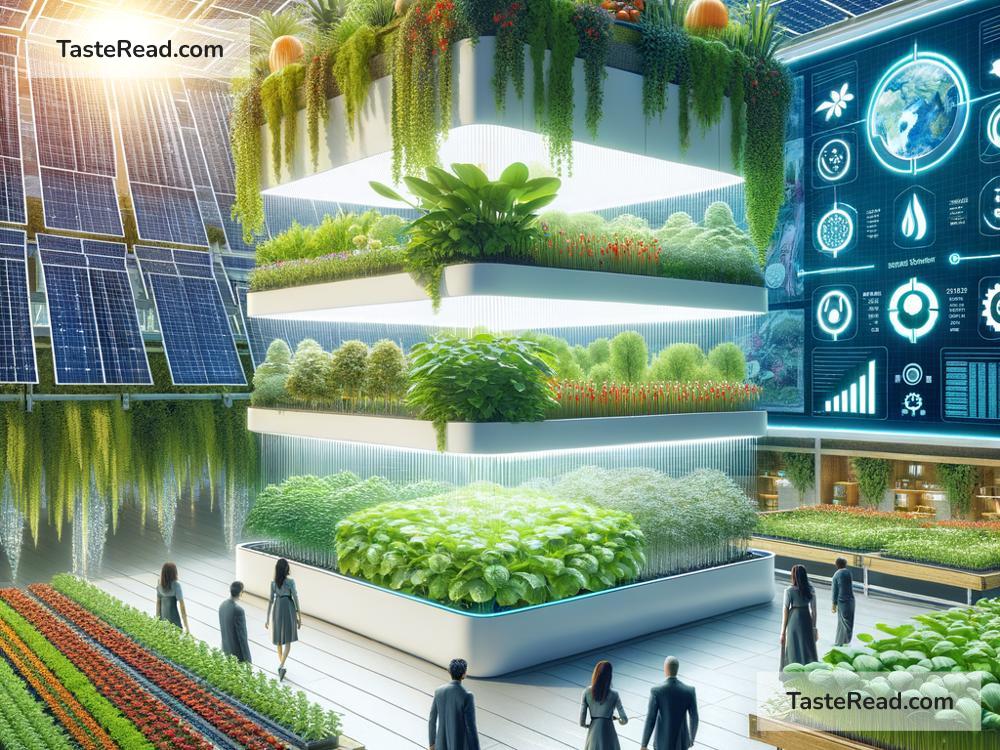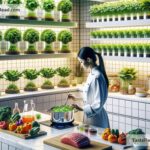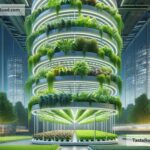The Future of Food: Regenerative Solutions for a Better Tomorrow
Food is something we all depend on to live. It nourishes us and connects us to the planet. But today, our food systems face challenges that are not only harming our health but also the environment. As the global population grows and climate change worsens, the future of food is an urgent topic. What will food production look like in 10, 20, or 50 years? The answer lies in regenerative systemic solutions.
What Are Regenerative Food Systems?
“Regenerative” means going beyond sustainability. Instead of just keeping things as they are, regenerative practices aim to actively improve ecosystems, soil health, biodiversity, and the people who work within these systems. It’s like hitting the reset button for agriculture and food systems.
Think about the world as a living body. Regenerative food systems are like giving a sick body medicines, exercise, and proper care to make it healthier—not just keeping it stable. These systems aim to reverse the harmful effects of conventional farming, such as soil degradation, water pollution, and increased greenhouse gas emissions.
The Problems with Current Food Systems
Today’s food systems often focus on producing as much food as possible at the lowest cost. While this approach has helped feed billions, it also leads to major problems:
-
Environmental Damage: Industrial farming depends heavily on chemical fertilizers, pesticides, and monoculture (growing only one crop on large areas). These practices harm soil health, reduce biodiversity, and contribute to water pollution.
-
Climate Change: Agriculture contributes about 23% of global greenhouse gas emissions, mainly through deforestation, methane from livestock, and heavy machinery.
-
Health Concerns: Many modern diets are built around ultra-processed foods that lack nutrition but are cheap and convenient. This can lead to health issues like obesity, diabetes, and heart disease.
-
Social Inequality: Farmers, especially small-scale ones, often struggle to make a living. They are squeezed by low prices, lack of resources, and unfair competition.
Clearly, the way we produce food needs to change—not just to feed people, but to protect the planet and create a fairer world.
Regenerative Solutions for the Future
Regenerative systemic solutions aim to solve these big problems by completely rethinking how we produce, distribute, and consume food. Let’s explore some ideas leading the way:
1. Regenerative Agriculture
Regenerative agriculture focuses on restoring soil health, increasing biodiversity, and creating resilient ecosystems. Practices include:
- Crop rotation and diversity: Instead of growing the same crop repeatedly, farmers grow different crops to maintain soil nutrients and prevent pests naturally.
- No-till farming: Avoiding plowing preserves the structure of soil, reduces erosion, and improves water retention.
- Cover crops and composting: These add organic matter to the soil, making it richer and healthier over time.
Healthier soil absorbs CO2 from the atmosphere, meaning regenerative farming can also help fight climate change!
2. Agroforestry
Imagine combining agriculture and forests. That’s agroforestry, where farmers grow crops among trees or shrubs. This method:
- Improves biodiversity by creating habitats for animals and insects.
- Prevents erosion and improves soil fertility.
- Captures carbon, helping reduce greenhouse gas emissions.
3. Alternative Proteins
Livestock farming is a major contributor to climate change. Regenerative systems include shifting toward alternative sources of protein, such as:
- Plant-based meats made from peas, soy, or mushrooms.
- Cellular agriculture: Scientists are growing meat in labs without raising animals.
- Insects: Yes, eating insects might sound strange, but they’re a high-protein, low-resource food source with enormous potential!
4. Food Waste Reduction
About one-third of the food produced globally is wasted. Regenerative systems aim to reduce waste through:
- Better distribution: Technologies like blockchain can connect farmers directly with buyers, reducing surplus.
- Circular food systems: Turning waste into compost or energy rather than discarding it.
- Healthier consumer habits: Encouraging people to buy only what they need and embrace “ugly” produce.
5. Tech-Driven Solutions
Technology can make food systems smarter and more efficient. Examples include:
- Precision farming: Using sensors, drones, and AI to apply water, fertilizers, and pesticides only where needed.
- Vertical farming: Growing crops in stacked layers indoors saves space and uses less water.
- Blockchain: Ensures transparency in food supply chains, helping farmers and consumers make better choices.
6. Community-Driven Models
Regenerative food systems empower people. Community-supported agriculture (CSA) allows consumers to buy directly from local farmers, strengthening local economies and reducing the environmental impact of long-distance transport.
A Bright Future
The future of food doesn’t have to be gloomy. With regenerative practices, we can heal our planet while feeding everyone. Innovations in agriculture, protein production, and waste reduction are setting the stage for healthier and more sustainable food systems.
Governments, businesses, and individuals all play a role in making this change. Policies can prioritize regeneration, while companies can invest in sustainable products. On a personal level, small shifts—like buying locally, reducing food waste, or eating plant-based more often—add up to big impacts.
Conclusion
The future of food is about balance: balancing what we take from the earth with what we give back. Regenerative solutions offer hope for a more resilient food system that nourishes people and our planet. By working together, we can ensure future generations will enjoy healthy food, clean water, and a vibrant natural world.
The shift to regenerative systems isn’t just a dream—it’s already happening. The question is: Will we embrace it quickly enough? The choices we make today will shape the food systems of tomorrow. Let’s choose wisely!


